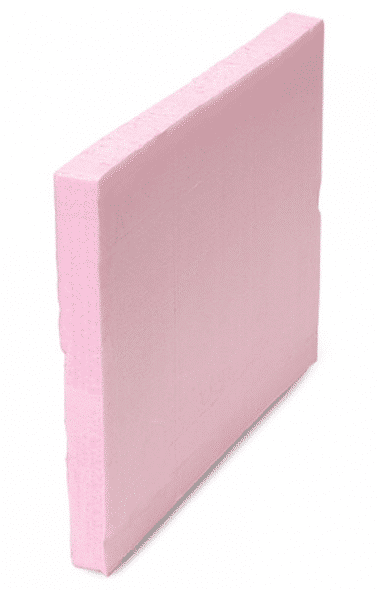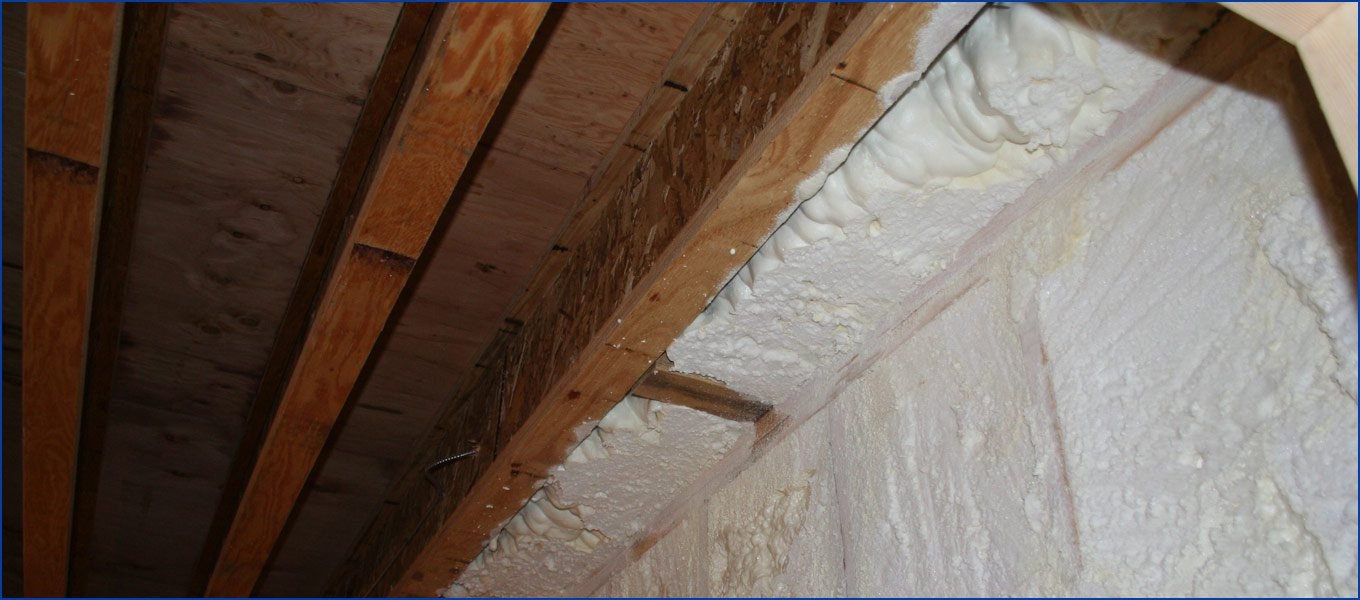How to Insulate a Rim Joist


If you’re tired of drafts creeping into your home due to poor insulation, it’s time to learn how to insulate a rim joist.
In many older homes, the rim joists are left uninsulated. That means the foundation block is the only thing blocking the outdoor air from getting inside. This leads to drafts along the floorboards, which can make the home uncomfortable.
With more than 20 years of experience insulating thousands of rim joists across the Mitten, RetroFoam of Michigan knows a lot about the types of insulation materials used in the rim joist.
The materials most commonly used are spray foam, fiberglass, and foam board.
In our continued efforts to educate homeowners, we have compiled information on the commonly used rim joist insulation options, the installation process, the pros and cons of each material, and the cost.
Let's get started.
How to Insulate a Basement Rimjoist
Adding rim joist insulation can either be done by a handy homeowner or a contractor.
The type of material you choose will dictate the best way to install it. You might make your decision based on your budget, or the insulation material's performance might be the deciding factor.
Let's take a look at some of the best insulation for a rim joist.
Foam Board Rim Joist Insulation

Let's talk about foam boards for a minute.
These rigid panels are made from materials like polystyrene, polyisocyanurate, and polyurethane. They're versatile enough to insulate your entire house, from the attic to the basement walls.
Foam boards are a great option for insulation or for figuring out how to insulate rim joists and basement rim joists.
These boards come in different thicknesses, lengths, and facings, so you can get the perfect fit for your project. Some brands even offer foam boards with a white foil vapor barrier on both sides, which helps keep water out and prevents mold from forming.
Pros and Cons of Foam Board Rim Joist Insulation
Some foam boards are water resistant, which is useful for areas like rim joists that can experience more moisture than other areas of the home.
The material is also lightweight and easy to use.
While some foam board insulations are water resistant, the bubbles inside the expanded polystyrene board stop heat transfer but not moisture, which could lead to mold and mildew growth. Polyiso boards can also suffer from decreased insulating abilities over time.
Foam Board Rim Joist Insulation Installation Process
Installing foam board insulation can be done as a Do-It-Yourself project, but precision during the process will be vital to getting the best results.
Foam boards must be custom-cut to fit into the rim joist area. If not done correctly, this could cost the homeowner more money in wasted materials. Cutting the material will take precision and some time.
The joints between the sheets and boards must be taped to prevent airflow into the rim joist from between the seams.
Any old insulation must first be removed before the foam boards can be installed.
Foam Board Insulation Cost
The cost to insulate a rim joist using foam boards will vary depending on how much of the material is needed to fully insulate the area and the thickness and brand used.
Other costs include knives for cutting, tape, and other materials to ensure an air seal. All supplies should be available at a local home improvement store.
The installation cost can also vary depending on if it is installed by a contractor or an experienced homeowner.
Fiberglass Rim Joist Insulation

Fiberglass insulation has been a popular choice for years, especially in older homes. It's found in walls, attics, crawl spaces, and rim joists. It's made from plastic reinforced with superfine glass fibers, giving it a distinctive look and feel.
When you're thinking about how to insulate a rim joist or a basement rim joist, you might consider fiberglass. It comes in two main forms: batts, rolls, and loose-fill. You can also find it as rigid boards and duct insulation.
According to the U.S. Department of Energy, manufacturers are producing medium- and high-density fiberglass batts with a slightly higher R-Value than the standard ones. You can use fiberglass in unfinished walls, floors, and ceilings, fitting it snugly between studs, joists, and beams. It's worth considering when looking for the best insulation for rim joist projects.
Pros and Cons of Fiberglass Rim Joist Insulation
Any homeowner who is handy around the house can install fiberglass as a DIY project, but proper protective gear must be worn when handling fiberglass insulation.
It is also fairly inexpensive when compared to other rim joist insulation materials.
Fiberglass doesn’t do as good a job at insulating the rim joist compared to other insulation materials, according to Home Construction Improvement.
The material is air permeable, which means it does nothing to prevent warm, humid interior air from contacting the rim joist. This can lead to mold, mildew, and rot.
Fiberglass Rim Joist Insulation Installation Process
Any old insulation must be removed first before adding fiberglass to the rim joist.
The fiberglass must be cut to perfectly fit the space. The material is air permeable, so air from outside will still get into the rim joist.
During the installation, protective gear must be worn, including gloves, long-sleeved shirts, pants, goggles, and masks. The fiberglass particles that come into contact with the skin can cause rashes. If the material is inhaled, it can cause coughing, nosebleeds, and respiratory issues.
Fiberglass Insulation Cost
The cost will be determined by the size of the area to be insulated with fiberglass. The amount of material needed to fully cover the area is also a factor.
It is important to note if a homeowner decides to hire a contractor, this will add an additional cost.
Spray Foam Rim Joist Insulation

Spray foam insulation is a water-blown and organic chemical compound derived from petroleum extracts.
Open cell spray foam fills every nook and cranny as it expands up to 100 times as it is being installed. It creates an air barrier that will seal the rim joist and stop any air from getting into the home.
Pros and Cons of Spray Foam Rim Joist Insulation
Spray foam insulation creates an air seal that prevents outside air from getting inside the home, stopping drafts near the floorboards.
The material doesn’t retain water, so mold and mildew cannot grow inside it.
It is not recommended that spray foam insulation be installed as a DIY project to ensure a proper air seal but spray foam kits can be purchased at local home improvement stores for experienced homeowners.
Spray Foam Rim Joist Insulation Installation Process
First, any old insulation in the rim joist must be removed so the spray foam can penetrate it and create an air seal.
Before the installation, the homeowner should remove any storage or other items from the rim joists and cover essential items.
Crews will then run a hose to the area and spray the foam insulation onto the rim joist.
Spray Foam Insulation Cost
The size of the area to be insulated is the number one factor in determining the cost to insulate the rim joist.
Another factor determining the cost is the material used to insulate the rim joist. Open cell spray foam is usually recommended, but there are circumstances where closed cell spray foam is a better option.
There are several differences between open cell and closed cell spray foams, including composition, blowing agent, sound dampening capabilities, and moisture permeability.
Choosing the Right Insulation for the Rim Joist
Now that you have reviewed the different options for rim joist insulation, it’s time to decide which material best suits your needs.
If you’d like to learn even more about the benefits of spray foam insulation, visit our Learning Center.
If you are considering spray foam insulation for your rim joist and live in Michigan’s lower peninsula, call us at 866-900-3626 for a free estimate or fill out the form on our website.
Related Articles
How Long Does Spray Foam Insulation Last?
Rim Joist Insulation Problems: 5 Things to Watch Out For
What is the Best Rim Joist Insulation? (Spray Foam vs. Fiberglass vs. Foam Board)
About Amanda Ringler
Amanda previously has worked as a breaking news and crime reporter, TV news producer, and editor in Flint and Detroit. Throughout her career as a journalist, she has won several awards from The Society of Professional Journalists - Detroit Chapter and the Michigan Press Association. As part of the RetroFoam of Michigan family, Amanda uses her experience as a journalist to write content that will help educate homeowners on the benefits of foam insulation. When Amanda isn’t writing, she’s spending time with her husband and rescued huskies. She also loves knitting, making art, cooking, and hosting dinner and a movie night for friends and family.

.jpg)
